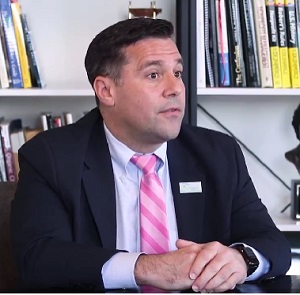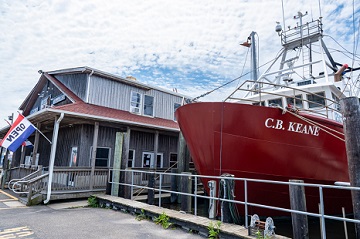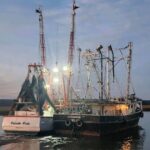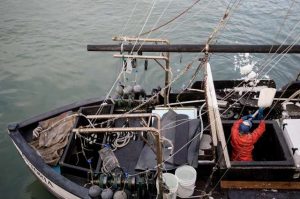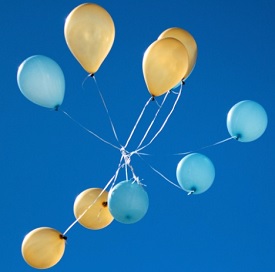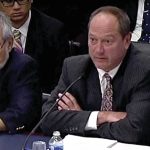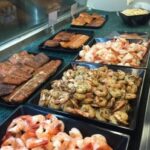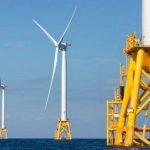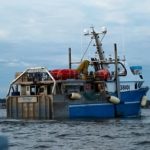Tag Archives: BOEM
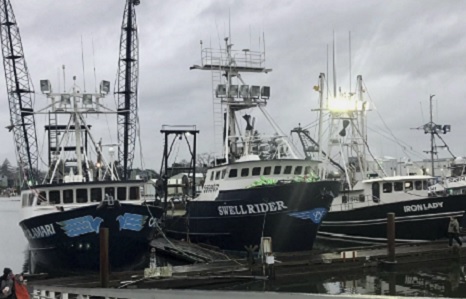
‘They’re not listening’: Fishermen, tribes voice concerns on two Oregon coast sites eyed for offshore wind farms
Last week, the Federal Bureau of Ocean Energy Management (BOEM) announced two draft Wind Energy Areas off the southern Oregon coast. One of them is offshore of Brookings, near the California border, the other off the coast of Coos Bay. The areas also represent prime fishing grounds and important cultural areas to local Indigenous tribes. Heather Mann, executive director of the Newport-based Midwater Trawlers Cooperative, said it feels like a lot of stakeholders’ concerns are being left unheard. “They’re not listening to coastal communities. They’re not listening to the fishing industry. They’re not listening to congressional representatives,” said Mann, whose organization represents 32 vessels that fish in the area. “Fishermen are not just concerned about being displaced from fishing grounds, though that is a critical piece. ” Video, >click to read< 11:35
CT, RI wind farm gets federal decision on environmental plan
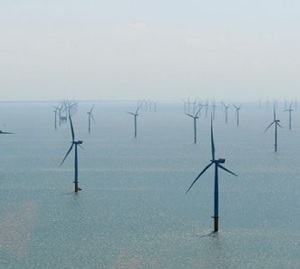 One of Connecticut’s first two wind farms reached a major milestone on Tuesday, with the Bureau of Ocean Energy issuing a “record of decision” in the environmental review process for Revolution Wind, a prerequisite clearing the way for construction in the coming weeks. Revolution Wind will be located 15 miles off Point Judith, R.I., with partners Orsted and Eversource planning to sell the electricity generated by wind turbines to Connecticut and Rhode Island. That construction activity includes crews conducting multiple test pits near along the Quonset Business Park in North Kingstown, R.I., and at the substation where power from the wind farm will be brought ashore, and then converted for use on the regional electric grid. >click to read< 16:06
One of Connecticut’s first two wind farms reached a major milestone on Tuesday, with the Bureau of Ocean Energy issuing a “record of decision” in the environmental review process for Revolution Wind, a prerequisite clearing the way for construction in the coming weeks. Revolution Wind will be located 15 miles off Point Judith, R.I., with partners Orsted and Eversource planning to sell the electricity generated by wind turbines to Connecticut and Rhode Island. That construction activity includes crews conducting multiple test pits near along the Quonset Business Park in North Kingstown, R.I., and at the substation where power from the wind farm will be brought ashore, and then converted for use on the regional electric grid. >click to read< 16:06
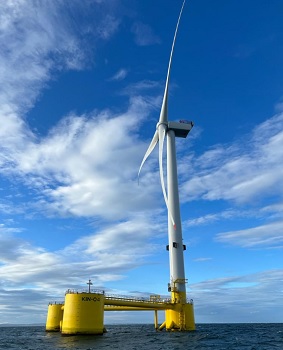
Feds ask for public comment on two Oregon Coast sites slated for floating offshore wind farms
Two sites off the southern Oregon coast could soon be home to the state’s first floating offshore wind farms. But first, the federal Bureau of Ocean Energy Management will meet with residents and stakeholders in coastal towns, some of whom are concerned about impact to the fishing industry and marine ecosystems. Officials from the ocean energy bureau announced Tuesday that they had identified two ideal “wind energy areas” near Coos Bay and Brookings. The two areas are 20 or more miles from land, collectively encompass about 344 square miles of ocean and could host enough floating wind turbines to generate 2.6 gigawatts of electricity, enough to power about 195,000 homes. >click to read< 10:29
Offshore wind farms pose wildlife threat
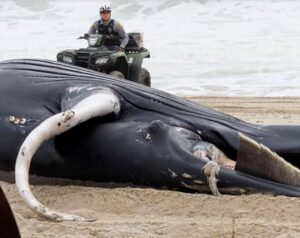 What with all the hype and grand economic plans for wind farming off Maryland’s coast, not one word from the project-movers on consequent harm to the sea’s wildlife, most notably the whales and fish. We are with Ocean City’s mayor and city council in linking the dead whales washed up on the coast with offshore wind harvesting. OC also doesn’t like the prospects for the “viewshed” — turbines visible in the distance. And has anyone considered the possible shift in the path of sharks? Do Maryland vacationers really want the ocean along our shores featuring lots of shark fins? Listen to the audio, or >click to read< By Bruce and Leslea Knauff 15:48
What with all the hype and grand economic plans for wind farming off Maryland’s coast, not one word from the project-movers on consequent harm to the sea’s wildlife, most notably the whales and fish. We are with Ocean City’s mayor and city council in linking the dead whales washed up on the coast with offshore wind harvesting. OC also doesn’t like the prospects for the “viewshed” — turbines visible in the distance. And has anyone considered the possible shift in the path of sharks? Do Maryland vacationers really want the ocean along our shores featuring lots of shark fins? Listen to the audio, or >click to read< By Bruce and Leslea Knauff 15:48
Fishermen slam Biden admin’s offshore wind push as threat to jobs, sea life
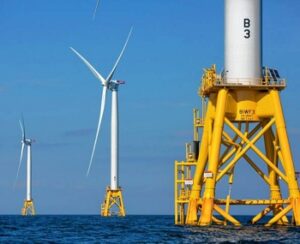 The New England Fishermen’s Stewardship Association (NEFSA) on Monday released an Offshore Wind Research Summary, a compilation of scholarly articles that identify dangers offshore wind farms pose to ocean ecosystems. “We cannot industrialize the Gulf of Maine until we understand how the wind industry interacts with the fisheries that wild harvesters have stewarded responsibly for decades,” said Jerry Leeman, NEFSA CEO and a longtime commercial fishing captain. Leeman says that the government’s attempt to justify wind farms leans on “voodoo science” because the proper methods and sufficient amount of time have not been applied. “The problem is the science that wraps around the science, the whole purpose for it is misinterpreted to the public through the fact that they think they’re getting real, accurate science,” Leeman said. >click to read<
The New England Fishermen’s Stewardship Association (NEFSA) on Monday released an Offshore Wind Research Summary, a compilation of scholarly articles that identify dangers offshore wind farms pose to ocean ecosystems. “We cannot industrialize the Gulf of Maine until we understand how the wind industry interacts with the fisheries that wild harvesters have stewarded responsibly for decades,” said Jerry Leeman, NEFSA CEO and a longtime commercial fishing captain. Leeman says that the government’s attempt to justify wind farms leans on “voodoo science” because the proper methods and sufficient amount of time have not been applied. “The problem is the science that wraps around the science, the whole purpose for it is misinterpreted to the public through the fact that they think they’re getting real, accurate science,” Leeman said. >click to read<
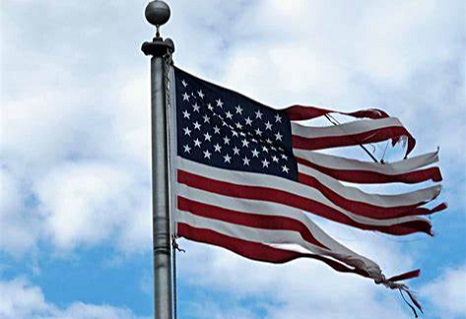
OFFSHORE WIND OPPONENTS NEED A MASS PROTEST IN WASHINGTON DC – BY JIM LOVGREN
In 2010 and 2012 fishermen held two different successful protests in Washington DC with thousands of fishermen travelling from around the country to attend. Both commercial and recreational fishermen voiced their concerns regarding catch shares and Magnuson Act reauthorization, among the multitude of issues that threatened their livelihoods. Today, the fishing industry is facing a far worse enemy then fishery management, as thousands of square miles of their historic fishing grounds have been auctioned off to the highest bidder in order to make way for the wildlife killing machines called wind turbines. These auctions have been held by BOEM, the Bureau of Ocean Energy Management, a part of the Department of the Interior. They are charged with the selling or leasing of US natural resources in our offshore waters, and apparently, they have absolutely no regard for any wildlife that may exist within them, or any people who might derive a living from catching said wildlife. >click to read< 11:50
Fishermen, activists protesting offshore wind projects on the East Coast
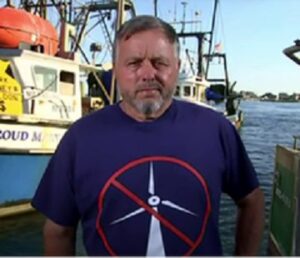 Critics are sounding the alarm on the ecological consequences of the Biden administration’s green energy agenda, specifically the increase marine wildlife deaths in conjunction with offshore wind farms. Activists along with local fishermen are particularly concerned about the rise in whale and dolphin beaching. “What we’re seeing is a failure to properly manage the situation,” Rhode Island fisherman Chris Brown said. “The whales have been migrating from their southern stations during the spring up through the mid-Atlantic region, and they didn’t even slow down the acoustic carpet bombing. And as a result, the Atlantic was littered with the dead whales and dolphins and sharks. There doesn’t seem to be any environmental concern. This is a manmade environmental disaster that’s unfolding. I expect that it will half a whale population in 10 years and probably the same for our fish.”Video, photos, >click to read< 19:17
Critics are sounding the alarm on the ecological consequences of the Biden administration’s green energy agenda, specifically the increase marine wildlife deaths in conjunction with offshore wind farms. Activists along with local fishermen are particularly concerned about the rise in whale and dolphin beaching. “What we’re seeing is a failure to properly manage the situation,” Rhode Island fisherman Chris Brown said. “The whales have been migrating from their southern stations during the spring up through the mid-Atlantic region, and they didn’t even slow down the acoustic carpet bombing. And as a result, the Atlantic was littered with the dead whales and dolphins and sharks. There doesn’t seem to be any environmental concern. This is a manmade environmental disaster that’s unfolding. I expect that it will half a whale population in 10 years and probably the same for our fish.”Video, photos, >click to read< 19:17
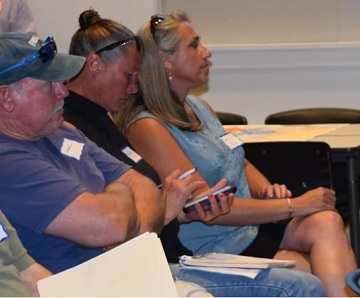
Maine Fishermen, scientists find flaws in potential wind energy lease areas
BOEM officials called the meeting to review newly released draft maps of where federal leases could be offered in the Gulf of Maine, known as the “call” area. They wanted fishermen’s feedback to see where the maps fell short based on what fishermen know from working on the water. “This is very difficult for our industry to face,” said Dustin Delano, New England Fishermen Stewardship’s chief operating officer, former vice president of the Maine Lobster Association and a fourth-generation lobsterman out of Friendship. “A lot of us feel this is going to wipe us off the map.” The fishermen present were unconvinced but resigned. >click to read< 07:55

First offshore wind leases off the Texas coast offered for bidding
The federal government on Thursday announced the first-ever chance for companies to lease areas in the Gulf of Mexico to build wind farms, including two parcels roughly 30 miles off the Texas coast near Galveston. Renewable energy developers will likely compete for the leases with firms that are better known for another kind of offshore construction: Oil and gas giants such as Shell and TotalEnergies qualified to join the bidding. Leaders of the traditionally fossil fuel-focused companies say their climate goals make investing in offshore wind critical. Both businesses are already involved in developing wind power in the Atlantic, including near New Jersey, New York and Massachusetts. >click to read< 10:02
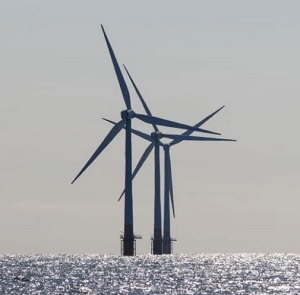
Gloucester Fishing industry reps raise concerns about wind energy areas
Commercial fisherman Al Cottone, executive director of the Gloucester Fisheries Commission, and Angela Sanfilippo, executive director of the Massachusetts Fishermen’s Partnership and president of the Gloucester Fishermen’s Wives Association, outlined the fishing industry’s concerns with offshore wind development. “First of all the construction process, the areas that are going to be used will probably be lost forever for commercial fishing,” Cottone said. “There are going to be a lot of losers when it comes to activity within these areas. You are not going to be able to find an area to put these arrays where someone is not going to lose their ability to fish and make a living,” Cottone said. He said this was a critical time for the local fishing industry. >click to read< 07:46

BOEM Schedules In-Person Informational Meetings on Offshore Wind in the Gulf of Maine
BOEM invites you to attend in-person meetings in Massachusetts, New Hampshire, and Maine in July 2023. BOEM is seeking feedback and local knowledge from the Gulf of Maine fishing community to facilitate improvements in spatial models used to inform draft Wind Energy Areas in the Gulf of Maine. The in-person meetings will provide opportunities to meet with BOEM staff, learn about the data BOEM has received for the models, and provide feedback on how their spatial models are incorporating the data. The meetings will include a mixture of small-group conversations and plenary speakers. Additional opportunities to comment will be available after the meetings. >click for schedule and locations< 16:49

The Whale Killing Study the Feds are Afraid to Do
The Feds have admitted that offshore wind development can cause the death of whales and other marine mammals, but they refuse actually to assess that threat for any wind facilities. So I here outline what such a study should look like. This sort of study is what they are afraid to do because it would give numbers to the deaths that are likely to occur, species by species. First off, here is the Feds’ own description of some of the known deadly threats. In this case, the offshore wind activity is driving the monster piles that support the turbine towers, but there are others. >click to read< 10:02
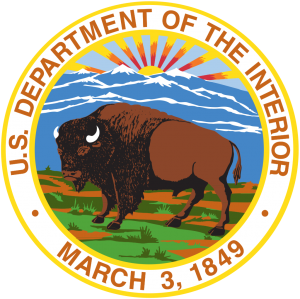
Biden-Harris Administration Approves Third Major Offshore Wind Project in U.S. Waters
The Department of the Interior’s Bureau of Ocean Energy Management today announced it has approved the plan for construction and operations of the Ocean Wind 1 project offshore New Jersey. Located about 13 nautical miles southeast of Atlantic City, the project will have an estimated capacity of 1,100 megawatts of clean energy – capable of powering over 380,000 homes – and is expected to create more than 3,000 good-paying jobs through development and a three-year construction cycle. >click to read< 07:30
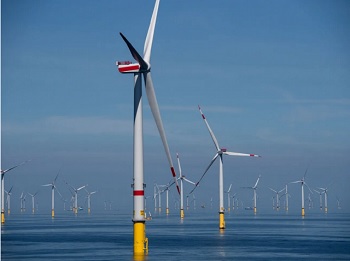
The dirty details of offshore wind’s ‘clean energy’
“In New Jersey, it’s go hard or go home,” Gov. Phil Murphy Tweeted after signing an executive order to up the state’s offshore wind goals by nearly 50% last September. Perhaps, the governor didn’t consider the fact that those in the state who question the perils and efficacy of offshore wind turbines are playing by the same saying. This “clean energy economy,” as conceived and fast-tracked by the Biden administration (and treated as the holy grail by Gov. Phil Murphy), has been shoved down the throats of those who live in shore communities, even though the risks to every aspect of marine life are poorly understood and little evidence exists that wind energy will make a noteworthy impact on climate change. By Linda Bonvie, >click to read< 09:53

Biden admin under fire for offshore wind impacts on military operations
Earlier this week, Rep. Chris Smith, R-N.J., industry stakeholders and experts met with officials from the Government Accountability Office (GAO), a top federal watchdog agency, to discuss their concerns about offshore wind development. According to Smith, who represents a district along the Atlantic coast home to a naval weapons depot and where offshore wind projects have been proposed, more than an hour of the three-hour meeting was devoted to military impacts. The GAO recently agreed to investigate the wide-ranging effects of offshore wind development after Smith, fellow New Jersey Rep. Jeff Van Drew, House Natural Resources Committee Chairman Bruce Westerman, R-Ark., and several other lawmakers called for a probe. The investigation will look, in part, into wind turbines’ impact on military operations and radar. >click to read< 07:55

Offshore wind proponents, critics square off at Atlantic Shores hearing
Both proponents and critics of New Jersey offshore wind power generation faced off on Monday during a hearing for a project, that if approved, would construct up to 200 wind turbines less than 9 miles off the Jersey Shore. Atlantic Shores Offshore Wind, a project by the power companies Shell and EDF Renewables North America, promises to power about 700,000 homes in New Jersey through the construction of up to 200 ocean wind turbines. Supporters of the project say Atlantic Shores and other offshore wind projects are needed to quickly reduce greenhouse gas emissions, which are contributing to ocean warming, acidification, coastal flooding and stronger storms. But opponents of the project say it amounts to industrialization of the Atlantic Ocean and will irreparably harm a delicate coastal ecosystem. They argue Atlantic Shores will eliminate crucial scallop and oyster beds to commercial fishing and ruin the ocean view on which local tourism depends. Video, >click to read< 15:06

U.S. Rep. Jared Golden introduced a bill in Congress that would prevent offshore wind development in key fishing area
The bill would prevent the federal Bureau of Ocean Energy Management from potentially hurting the fishing and lobstering industries in Maine, said Golden, D-2nd District. The legislation also would launch an assessment of how federal agencies like the BOEM and the National Marine Fisheries Service study the effects of offshore wind development and engage with industry groups. Lobster Management Area 1 is the zone closest to the shores of Maine and stretches along the entire coast. That’s where Virginia Olsen, a commercial lobsterman and director of the Maine Lobstering Union, says a majority of Maine fishing and lobstering is concentrated. “I think this is the exclusion zone that the Maine Lobster Union and the area that the (Maine Lobstermen’s Association) would agree is most important economically to the fishery,” Golden said. >click to read< 19:46
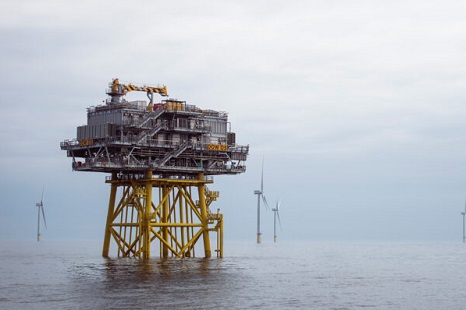
Offshore Wind Electrical Substations; The Secret, Silent Killers by Jim Lovgren
The marine mammal strandings that are taking place almost everyday along the US east coast are the most visible consequence of the Biden administration’s reckless disregard of all environmental safeguards that had been carefully crafted since the environmental movement started in the 1960’s. Embarrassingly, the cowards at the National Marine Fishery Service have stood by and watched as research vessels have been performing geologic surveys with high powered Sonar, and Seismic devises before they had their incidental take permits issued. They have also authorized over 100,000 level B takes of marine mammals, and that’s just for a few projects, as they fully expect the offshore wind factories to cause the extinction of the critically endangered Northern Right Whale. Just ask Sean Hayes, from the NMFS protected species department, whose observations were ignored by BOEM, hence an ESA violation. >click to read< 11:34

Kotek calls for pause on offshore wind turbines
Gov. Tina Kotek is joining a chorus of voices, including tribes and commercial fishermen, urging the Biden administration to slow down its push for floating wind farms in the Pacific Ocean off the state’s southern coast. Regulators are now preparing a draft report outlining where in the areas turbines may be built safely while minimizing harm to fisheries and marine life. Members of the West Coast fishing industry, however, claim that the bureau is ignoring their concerns. They worry that floating offshore wind farms will displace boats from highly productive fishing grounds and could irreversibly damage the California Current ecosystem. >click to read< 09:20

Maine Delegation, Gov. Mills asks BOEM to listen to fishermen, remove LMA1 from wind power planning
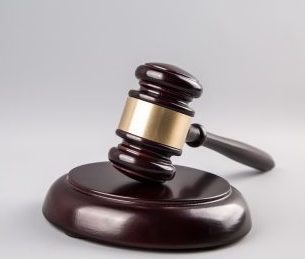
Offshore Wind Litigation: Court Declines to Halt Vineyard Wind Construction
A federal court has denied a request by members of the fishing industry to pause offshore construction of the Vineyard Wind Project (Project), the first modern utility-scale offshore wind project in the United States to receive all permits and approvals necessary to begin construction. On May 25, 2023, Judge Indira Talwani of the US District Court for the District of Massachusetts denied a motion for stay, or in the alternative, for preliminary injunction,,, In Seafreeze Shoreside, Inc. et al. v. US Department of the Interior et al., the plaintiffs alleged that the Bureau of Ocean Energy Management (BOEM) and various other federal permitting agencies violated the National Environmental Policy Act (NEPA), the Outer Continental Shelf Lands Act (OCSLA), and a variety of other statutes and regulations by issuing the Project’s lease and its final approvals. >click to read< 16:57
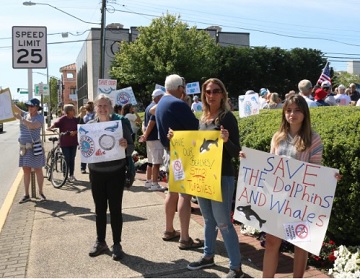
Wind Farm Protesters March in Ocean City
Opposition to the wind farm has been mounting following more than 30 whale deaths along the East Coast that critics have blamed on sonar mapping of the seabed that is needed for construction of the project. However, government agencies such as the National Oceanic and Atmospheric Administration and the New Jersey Department of Environmental Protection say the recent deaths of whales, dolphins and other marine creatures in New Jersey and other coastal states have nothing to do with the wind farm work. They say evidence shows that most of the whales were struck and killed by shipping traffic. Opponents reject those claims, though. During Saturday’s protest, speakers pointed the finger at the wind farm for the whale deaths and warned of other possible dire impacts that the project could have on the Jersey Shore’s environment, the tourism industry and commercial fishing operations. Photos, Video, >click to read< 07:55

Cape May County to fight Ørsted, Ocean Wind 1, 2
“At first, the County of Cape May was interested in trying to work with Ørsted to find a way forward, perhaps with some modifications to the project to reduce visual, environmental and economic impacts,” Commission Director Len Desiderio said in a release issued by the county. “We would like to see land-based offshore wind facilities and supply-chain infrastructure built here in New Jersey, since that would create good opportunities for trade workers and others. But we cannot sit quietly by as hundreds of windmills are installed off our beaches as state and federal government agencies ignore our legitimate and serious concerns. “As time went by, it became clear that Ørsted was not interested in finding any compromise,” Desiderio said. “It is clear to us now that the approach among this foreign corporation and their partners in the state and federal governments is to build these things as fast as they can despite the potential for devastating environmental and economic impacts. >click to read< 09:42

California: Can wind energy and fishing industry co-exist on the coast?
A statehouse hearing on offshore wind energy explored “The Future of Fisheries and Offshore Wind Energy in the Golden State” and fishing representatives said the scenario is unknown and they’re concerned. Fishermen are bracing for impacts to their livelihoods, as leases for five areas off the California coast, including two in Humboldt making up about half of $775 million plus in lease sales, have been federally-approved. Unavoidable impacts to fishing are expected so compensation for consequences like loss of fishing grounds will eventually be calculated. But fishing representatives said at this point the scale of the impacts can only be guessed and the leasing process hasn’t been inclusive enough. >click to read< 11:12
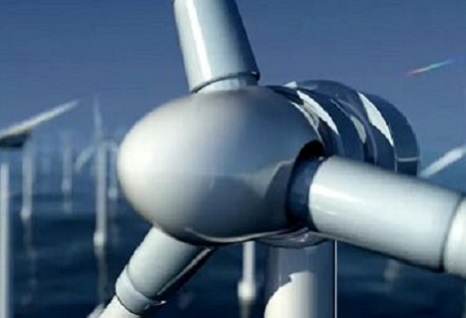
Wind project scope ‘staggering’
It wasn’t “until the whales and the dolphins started washing up that people’s attention was able to focus” on the offshore wind farms, according to Cindy Zipf, and when people looked beyond the whales, they realized what is happening is “staggering.” “I don’t think ever in the history of mankind have we proposed to industrialize an ecosystem this fast and at this magnitude,” she said. Zipf is executive director of Clean Ocean Action, a coalition of groups dedicated to protecting the ocean. Zipf acknowledges the pace at which the plans are moving forward is making efforts to slow or stop them difficult. “It’s challenging considering how fast-tracked everything is and how limited the permitting process is. It’s kind of under the jurisdiction of two people to make it happen, President Biden and Gov. Murphy,” she said. “Hopefully as more is understood there will be some more caution but as it is right now the (state and federal) agencies are very enthusiastic.” >click to read< 16:29






